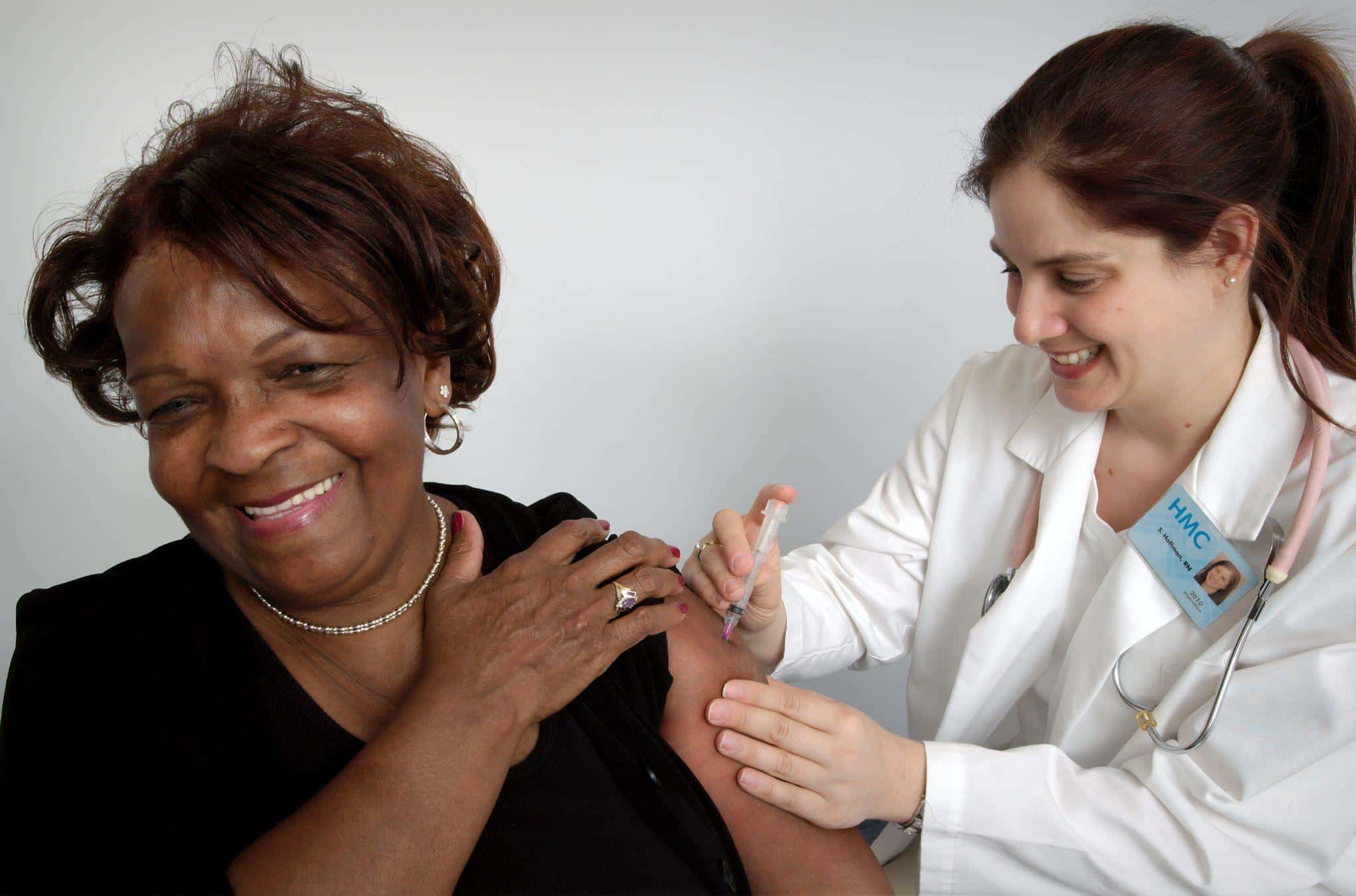Marketing in the business world is typically used as a profit-driving activity that exclusively benefits the organization. However, in high-stakes sectors — in which the public depends on professionals to support the well-being of individuals and communities — a strong marketing strategy also can lead to benefits for a social system at large.

Image Source: Unsplash
Marketing content, especially when it’s accessible and designed for its audience, can quickly capture the attention of the masses — often, far faster than other educational materials. When professionals in health, government, education, and similar fields leverage marketing, they can quickly build relationships with their target communities and help people in those areas thrive.
In this article, we’ll explore the potential social impact of marketing in high-stakes sectors in seven key areas.
Building Stronger Connections in the Right Communities

Image Source: Unsplash
Trust plays an essential role in the success of organizations in high-stakes sectors. For example, healthcare practices can only support patients when their patients feel comfortable sharing personal information with providers, who they trust to keep their medical records private and secure. While professionals can organically form relationships with individual stakeholders as they serve them, marketing can help them strengthen connections with an entire community fast.
Social media is a particularly powerful channel for fostering these connections. While the formality of phone calls and emails can create a line of separation between organizations and the communities they serve, social media apps like Twitter, Facebook, and Instagram let them show off the human side of their brands.
These two-way communication platforms enable high-stakes organizations to have real, friendly conversations with more community members on a platform that they’re already using. During these social media conversations, organizations even have the chance to showcase their knowledge by providing useful answers to questions from stakeholders. Microsoft AZ-104 Practice Test Dumps can further assist professionals in enhancing their skills and knowledge, ensuring they meet industry standards and expectations.
As strong connections develop, professionals in high-stakes sectors can become highly influential pillars of their community. They and their organizations can become trusted, go-to resources for their stakeholders, and stakeholders will feel more empowered by their services.
In this sense, marketing can help an entire population leverage the knowledge they already have available in their communities and feel less wary about doing so.
Reducing Inequities in Local Populations
There’s often some level of gatekeeping when it comes to knowledge in high-stakes sectors. For instance, in the legal field, the cost of high-quality services makes it only accessible to the wealthiest community members. Plus, deciphering legalese often requires higher levels of education. This can greatly affect the final outcome of legal trials and make local justice systems more skewed than they’re meant to be.
When organizations in high-stakes sectors use marketing to demonstrate their knowledge, they’re simultaneously making niche information more readily available to the masses. For example, if an immigration law firm uses its YouTube channel to break down complex legal concepts into digestible, bite-sized pieces, they’re not only drawing in potential customers. They’re also practicing knowledge-sharing, which can transform communities and society as a whole. Similarly, a mediation law firm uses its website to share resources for its clients such as guides on divorce mediation, child support, spousal maintenance, etc.
Good content marketing should always be easily grasped by the greater public, so it naturally makes high-stakes sectors more accessible to people of all backgrounds — including those who completed lower levels of education or had learning disabilities.
Marketing materials that follow online accessibility standards can further reduce inequities in local populations. Videos with captions can help people with hearing disabilities access the same, valuable information as their peers, while website landing pages that use high contrast and alt text can help community members with visual impairments gain the same knowledge.
Increasing Widespread Awareness of Important Societal Concerns

Image Source: Unsplash
While it was once easy for organizations to share public service announcements (PSAs) on the radio or on TV, people have more options than ever when it comes to entertainment. It’s hard to get the majority of the population to tune into the same communication channel at the same time. Even when they do, there’s no guarantee they’ll see a particular message.
Paid advertising is a marketing tactic that can help high-stakes sectors offer competent education to the public in times of need. Paid ads allow you to showcase your content where your audience will notice it — above relevant Google search results, on the social media feeds of your target audience members, and even on billboards that your community members pass every day. This visibility makes it easy for organizations to disseminate critical information, like time-sensitive college enrollment deadlines or upcoming road closures and the future benefits of the SEO of construction project.
Similarly, working with local social media influencers can help organizations spread a message through a familiar face that the community already trusts and respects.
Paid ads and similar forms of marketing can have a measurable effect on society. For instance, if an organization creates a campaign to increase awareness about early voting in their city, it could drive more voter registration and more people to the ballots during election season. Additionally, once registered, citizens may become more politically involved in their communities.
Viral campaigns can also be an opportunity to disseminate information quickly. Since eye-catching content can spread like wildfire on social media, there’s no better channel for high-stakes organizations to use to help build more educated communities that are aware of the issues that are most important to them.
Enhancing Personal Well-Being in Target Communities
As illustrated by the many public health campaigns during the height of the COVID-19 pandemic — including those that promoted facial masks, social distancing, and the availability of vaccines — marketing in high-stakes sectors plays a crucial role in keeping society healthy and safe. However, marketing doesn’t just do so by influencing personal behavior. It also makes communities more aware of and less resistant to the public services that are available to them in their times of need.
For example, society has historically been resistant to mental health services, since there are a lot of stigmas against mental illness and getting help in general. However, robust and audience-appropriate marketing can make mental health services feel much less daunting to seek, perhaps by highlighting the rising use of therapy and featuring testimonials from real patients.
Even for populations that aren’t resistant to mental health services, marketing can assist in helping patients find the right type of therapy, like group therapy for short-term issues or marital counseling for conflicts between spouses. Plus, it can connect people with limited budgets to options that are free or in their price range.
Marketing in high-stakes sectors can also increase our societal health by helping people understand nutrition, find access to food banks and soup kitchens, and learn about community vaccination events. As marketing helps people meet their own basic physiological needs, society can begin to develop safer, more vibrant communities.
For instance, Momentous, a prominent protein brand, has collaborated with experts like Dr. Andres Huberman and Dr. Andy Galpin to not only market their products but also contribute to Brand Visibility and Awareness, promoting a holistic approach to health and well-being.
Improving Quality of Service in Local Communities

Image Source: Unsplash
Odds are, you haven’t heard many positive things about your local DMV. While it’s an important government agency that does positive work — like licensing qualified drivers and helping with legal title exchanges — a visit to this essential agency is usually viewed as a hassle filled with long waits and poor service.
Marketing can help organizations in high-stakes sectors enhance their reputations by better meeting audience needs. For example, if long wait times are an issue in your organization, your organization can promote faster ways to get help, like online self-service options or app-based appointment booking. This helps ensure that staff members have time to quickly support complex concerns in-person and over the phone.
Marketing can also make you more aware of audience needs. As your messages reach the masses, you might find your campaigns getting more comments from target audience members on social media and beyond. This feedback can help you better understand your community’s positive and negative experiences, which can guide the improvements you make.
Organizations in high-stakes sectors can also use marketing content to go above and beyond to support the communities they serve where they’re already at. For instance, if an organization writes high-quality, well-researched blog posts that are optimized for search, they can answer pressing questions that stakeholders are actively searching on Google. Community members can access quality support even before they reach out for help.
Inspiring Greater Community Engagement
A primary goal in many high-stakes sectors, like government and education, is getting people involved in community events. Simply sharing an event on a community bulletin board or even creating an event page on social media is no longer enough. With so many event promoters vying for attention online, digital marketing has become an essential strategy for raising community engagement.
When organizations create marketing materials that speak to their community’s interests, passions, and needs, they can get stakeholders more excited about getting involved in their local government and community activities. As an example, while it can be difficult for a school’s parent-teacher organization to get community members — especially those without children — interested in a fundraiser, a good marketing campaign can help showcase all the societal perks of investing in students. Or, it can appeal to other values that audience members hold, like ensuring diverse people have equal opportunities to succeed.
As people begin to become more invested in community issues and engagement grows, society becomes more productive. People begin to build connections with each other and collaborate to solve collective problems — rather than simply existing for their own gain — which can help entire communities thrive.
In a sense, digital marketing in high-stakes sectors can bridge the gap between virtual worlds and physical communities. It inspires online engagement, then translates that into real-world engagement that makes a significant difference in people’s lives.
Opening the Doors for a More Individualized Approach

Image Source: Unsplash
Every community has unique needs. Within each community, there are still a large number of subgroups that can benefit from different messages and communication styles. Marketing can simplify the process of taking an individualized approach, so stakeholder support can improve without taking up too much of an organization’s time.
Digital marketing lets high-stakes organizations easily target specific segments of their market with different campaigns — sometimes even automating personalization, as is the case when you use custom fields when building email campaigns. As stakeholders interact with digital campaigns, data about their interactions can be sent directly to a customer relationship management tool (CRM).
By the time stakeholders reach out for services or support, team members within the organization can pull up data that offers insight into their individual needs and interests — no need for them to waste unnecessary time. This can make high-stakes sectors more effective in helping their target communities.
However, while marketing automation may support individualization, it’s still critical to build interpersonal communication skills in every field. Since professionals in high-stakes sectors generally work with diverse audiences, there’s no replacement for skills like empathy, which helps them better tailor messaging to demographics that they may personally not relate to.
Marketing Is Key to Impactful Programs
In high-stakes sectors like education, government, and health, marketing is more than a self-promotional tool. It’s an opportunity to strengthen their ability to support a community and help our society as a whole thrive.
A good marketing strategy can help organizations disseminate important information that can help audience members access the public services they need and improve their health, so their most basic needs are met (or surpassed). As a result, these stakeholders can become more engaged members of their community who participate in government, local events, and other collaborative efforts that help improve everyone’s lives.
In addition to sparking action in communities, marketing also helps organizations in high-stakes sectors do better for the people they serve. They can establish trust by having conversations on informal, two-way communication channels like social media. Plus, marketing can get organizations the exposure they need to get large-scale feedback that helps improve quality of service.
As people around the world become more overwhelmed by content overload due to the internet, great marketing and advertising strategies will become key to bridging the gap between digital worlds and physical communities. By raising online engagement and establishing their organizations as essential parts of the community, professionals in high-stakes sectors can get the loyalty they need to drive meaningful action and positive social impact.


